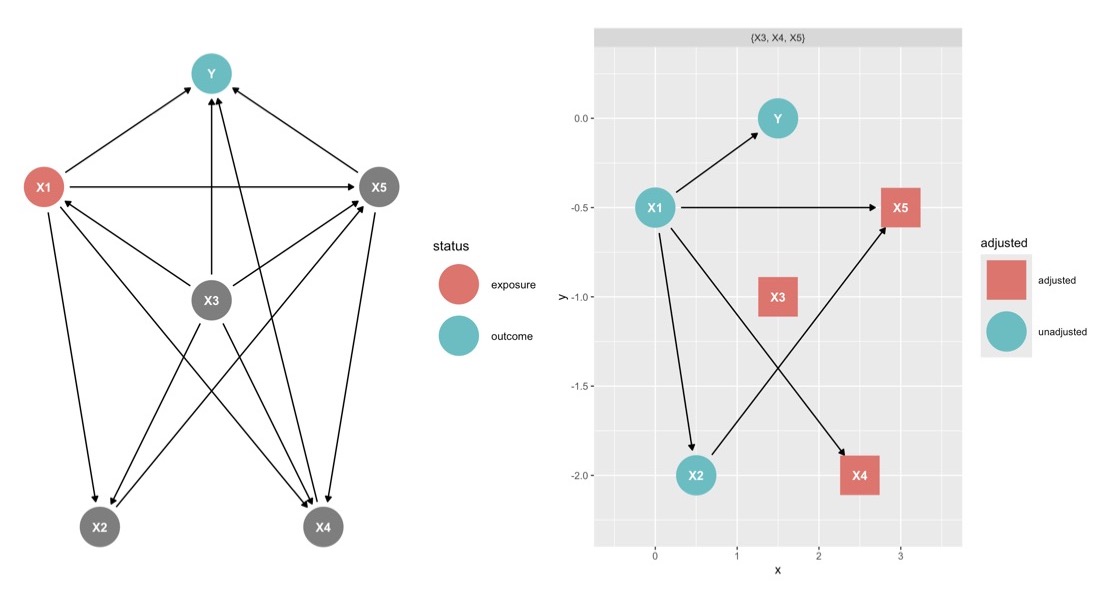Typically we construct DAGs with focus on a single causal variable (i.e., exposure), and the rest of DAG is developed to focus on specifying an adjustment set for the effect of that variable on the outcome. That means you can omit parts of the causal system that you know are irrelevant for selecting variables to adjust for when identifyign the effect of that focal variable. For example, if a confounder X of T and Y is caused by another variable, Z, that also affects Y (but not T), it isn't necessary to include Z in the DAG because it does not affect your adjustment set. In this way, you can identifying a causal effect with an "incomplete" DAG. If this is your scenario, then you cannot do a DAG analysis to decide whether an association estimate (e.g., the coefficient on X5) represents a causal effect. The DAG was only designed to identify the effect of the treatment on the outcome, not all variables on the outcome. If you can fully specify the causal system in the DAG, then you can use the DAG to identify adjustment sets for the effects of more than one variable. In practice, though, very rarely is it the case that you can identify multiple causal effects from a single model. X1 and X5 have different adjustment sets, so adjusting for all variables in a isngle model does not guarantee both effects are identified.
For more details on this, read the famous "table 2 fallacy" paper (Westreich & Greenland, 2013) and another more recent paper aimed at social scientists (Keele et al., 2020). From these you will see that you should essentially never interpret any effect from a regression model other than the single one you built the regression model to estimate.
I would also warn you that {X3, X4, X5} is not a sufficient adjustment set for the total effect of X1 on Y. X3 is the only confounder of X1 and Y; adjusting for any other variables changes the interpretation of the effect (e.g., to a direct effect) and may induce bias in the new effect (e.g., because you are conditioning on colliders). Maybe ggdag got it wrong or you misinterpreted its output.
"control for X", "do X" and "adjust for X" are imprecise terms that do not exactly mean "include X in a regression model". There are many ways to control for X; by design (e.g., randomization), in a regression, using matching or weighting, stratifying on X, etc., including not even by measuring X; for example, adjusting for state (e.g., by including state as a predictor in a regression model) controls for all between-state differences without measuring them. "do X" refers to the do-operator, which has a very specific technical meaning: it means to set X to a value irrespective of the value its antecedents (causes) take; it is used to define causal estimands in Pearl's causal framework and is not a statistical operation. "Adjusting for X" usually means including X in a regression model, but regression isn't the only way to do so (e.g., via matching, weighting, etc.). Adjustment usually refers to a statistical procedure that is used to control for X.


